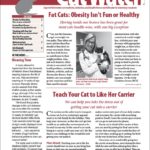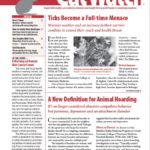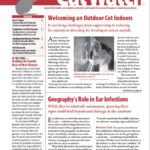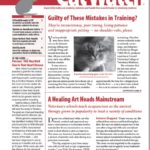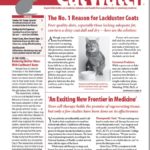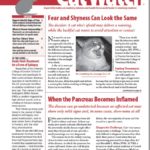Download the Full December 2017 Issue PDF
Download the Full December 2017 Issue PDF
Download the Full April 2017 Issue PDF
If you have a cat who loves to snuggle under the covers, dont fit him with a flea and tick collar containing medicine designed to last six months or more. There are no studies out there, but logically, if a pet wearing such a collar snuggles under the covers, the person can be in contact with that topical insecticide during the entire night of sleep. Why take that risk? Penny says. However, if your cat sleeps at the foot of your bed on top of your bedspread, that is fine.
Download the Full March 2017 Issue PDF
To minimize resource guarding in a multi-pet household, strive to create a healthy feline indoor environment. Do not yell at or physically punish your resource-guarding cat because this punitive approach will cause him to want to protect his resources even more and it can damage your relationship with him. While resource guarding is less common in cats than in dogs, it can escalate into a serious behavior issue that requires intervention by a professional.
Download the Full October 2016 Issue PDF
If your cat enjoys other pets, is even-tempered and not easily rattled by change, consider sending him to a boarding facility. The International Boarding and Pet Services Association, www.ibpsa.com, offers training and encourages members to cultivate strong relationships with local veterinarians, says Director Carmen Rustenbeck. She recommends choosing a facility with a trained staff who welcomes questions.
Download the Full September 2016 Issue PDF
Another way to make life more fulfilling for cats: Enrich the environment. Cats like to look out windows and see birds, Dr. Houpt says. They will greatly appreciate a viewing perch, such as a cat tree. You can also simulate outdoor life by playing games that allow them to stalk and hunt prey-such as a tossed catnip mouse or a wand with dangling feathers like Da Bird. I also recommend the CatDancer, a bouncy wire with rugged cardboard dangles, which moves in intriguingly erratic ways. Laser pointers make a dot of light that owners can wave for their cats to chase. And treat balls with holes that release kibble when batted around can keep life interesting while you are away.
Download the Full August 2016 Issue PDF
If you actually catch the cat in the act of inappropriately urinating or defecating, you can say No! However, a cat may not use the box because he is not feeling well. Medical causes should always be explored. For example, a bladder infection could cause him to connect its pain with using the litter box. Arthritis may prevent easy entry to the box.
Download the Full July 2016 Issue PDF
Last year the diagnostic center and the University of Wisconsin analyzed hundreds of samples to identify the influenza strain in the Chicago area that caused illness in hundreds of dogs. The ability of the avian origin H3N2 canine influenza virus to infect cats was clearly demonstrated in South Korea and China prior to its arrival in the U.S. early in 2015, Dr. Dubovi says. The initial report on the susceptibility of cats to H3N2 was based on a significant outbreak of respiratory disease in an animal shelter housing both cats and dogs. Experimental studies also confirmed the ability of H3N2 to infect cats.
Download the Full June 2016 Issue PDF
Many shy or fearful cats can evolve into loving pets if owners properly handle them, use behavior modifications and/or anti-anxiety medications, and provide a safe environment. Make sure the cat has escape routes like on top or under furniture, especially if there are dogs or other cats in the home, says Dr. Houpt. Initially, keep dogs on leashes inside or at least separate them in a different room using barriers, such as baby gates, so they can sniff one another without having close or physical contact.
Download the Full May 2016 Issue PDF
Advances in treatments are helping people born with congenital heart disease live longer and with greater quality of life. But not all structural problems with the heart can be permanently fixed in childhood. In fact, many treatments that help get these patients into adulthood often need revisiting later in life. Being born with congenital heart disease means being always mindful of your heart health. Some of these individuals, because they have been heart patients their whole lives, are mindful of their diet, exercise and risk factor control.

